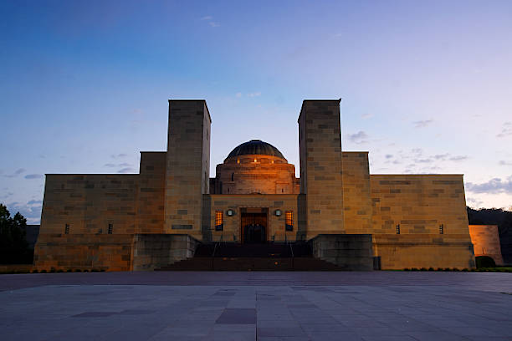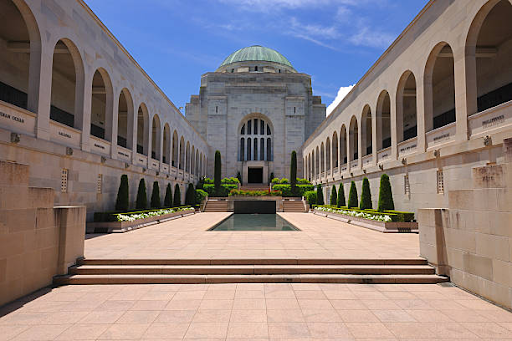The Australian War Memorial stands as a poignant reminder of the sacrifices made by Australian service members in various conflicts. Located in Canberra, the capital city of Australia, the memorial serves multiple roles: it’s a place of commemoration, a repository of military history, and an educational resource that tells the stories of those who served and died for their country. Rich with historical artifacts, personal stories, and striking architecture, the memorial provides visitors with a solemn and thought-provoking experience that honors the past while educating the future. This article will unveil several fascinating facts about this national landmark, revealing its significance and the depth of what it represents.
The History and Significance of the Memorial
The Australian War Memorial was officially opened on November 11, 1941, during the midst of World War II, and has since become a central piece of Australia’s national identity. It was conceived as a way to commemorate the enormous losses Australia suffered during World War I. However, the memorial has grown to encompass recognition of service and sacrifice in all wars and operational service by Australia’s armed forces. The significance of the memorial’s opening date, Armistice Day, marks the end of World War I and has profound resonance as a time for reflection on peace and remembrance.
The architectural design of the memorial combines Byzantine and Art Deco styles, encompassing an extensive museum, the Commemorative Area (including the Hall of Memory with the Tomb of the Unknown Australian Soldier), and the Research Center. The Roll of Honour and the Pool of Reflection also form key components of the site, invoking deep contemplation among visitors as they consider the human cost of war.
Exhibitions and Collections
At the Australian War Memorial, one can explore an extensive range of exhibitions that provide insight into Australia’s military involvement from the colonial period through to modern-day conflicts. Visitors can peruse galleries dedicated to World Wars I and II, highlighting personal stories, weaponry, military technology, and the socio-political contexts of each era. Additional displays focus on conflicts in Korea, Vietnam, Afghanistan, and Iraq, as well as peacekeeping and humanitarian operations.
The collection comprises more than just military paraphernalia; it includes letters, diaries, artworks, photographs, and personal memorabilia that offer intimate glances into the lives of those who served. The Memorial’s collection is safeguarded and curated with the utmost respect and attention to detail, ensuring each item’s narrative is preserved and honored.

The Commemorative Ceremonies
Every year, the Australian War Memorial hosts several commemorations that draw thousands of visitors, especially on ANZAC Day (April 25) and Remembrance Day (November 11). One of the most significant features of these ceremonies is the Last Post Ceremony, held each day at the close of the Memorial’s visiting hours. During this ceremony, the story of one of the names on the Roll of Honour is told, serving as a daily act of remembrance.
These ceremonies are fundamental to the mission of the War Memorial as they not only pay homage to the fallen but also maintain the spiritual connection between current generations of Australians and their armed forces. The rituals performed during these ceremonies, including the laying of wreaths, the playing of the Last Post, and the observance of silence, are designed to reinforce the values of courage, sacrifice, and remembrance.
The Roll of Honour and The Unknown Soldier
The Roll of Honour is an extensive wall that lists the names of over 102,000 Australians who have lost their lives in war or armed conflicts. Visitors often leave poppies beside names, a tradition that adds a deeply personal dimension to the act of remembrance. It symbolizes the connection between the living and the dead, representing an ongoing dialogue of gratitude and memory.
At the heart of the Memorial is the Tomb of the Unknown Australian Soldier, who represents all Australians who have been killed in war. The tomb, which contains the remains of an unknown Australian soldier brought back from France, serves as an all-encompassing monument to those who paid the ultimate price, with their identity known only to God. This also provides a focal point for personal reflection and offers solace to those whose loved ones remain unidentified or never returned home.
The Memorial’s Research and Educational Endeavors
The Australian War Memorial also takes on an educational role, providing extensive learning opportunities for schools and the general public. Its Research Center holds a trove of archives, including nominal rolls, military records, and other documents that are indispensable for researchers and family historians. The educational programs offered by the Memorial are designed to not only teach historical facts but also to convey the experiences of military service and the broader implications of conflict.
Through its innovative use of technology and digital resources, the Memorial extends its reach beyond physical boundaries, allowing access to virtual tours, online exhibits, and databases. This ensures that the stories it holds, lessons it teaches, and the history it preserves are accessible to a worldwide audience, fostering a global understanding and appreciation of Australia’s military past.
Conclusion
The Australian War Memorial stands as a testimony to Australia’s military history and the individuals who have shaped it. From the Roll of Honour to the Tomb of the Unknown Australian Soldier, from the solemn commemorative ceremonies to the extensive collections, the Memorial encapsulates the nation’s journey through conflict and peace. Its educational programs and digital outreach further ensure that the legacy of Australia’s servicemen and women continues to resonate, providing inspiration for current and future generations. By exploring these facts about the memorial, one gains a deeper appreciation for the pivotal role it plays in the collective memory of the nation and the preservation of its history.
FAQs
-
- When was the Australian War Memorial officially opened?
The Australian War Memorial was officially opened on November 11, 1941.
-
- What types of exhibitions can be seen at the Memorial?
Exhibitions at the Memorial range from Australia’s pre-colonial conflicts through to modern-day wars and peacekeeping operations, including personal stories and military artifacts.
-
- What is the significance of the Tomb of the Unknown Australian Soldier?
The Tomb of the Unknown Australian Soldier is symbolic of all Australians who have died in war, especially those who are unidentified or did not return home. It serves as a poignant focal point for national remembrance and reflection.
-
- How does the Memorial pay tribute to those who have fallen?
The Memorial pays tribute through the Roll of Honour, daily Last Post Ceremonies, and special commemorative events on ANZAC Day and Remembrance Day.
-
- Can research be conducted at the Australian War Memorial?
Yes, the Memorial’s Research Center holds a vast collection of military records, archives, and other resources invaluable for research and family history investigations.
